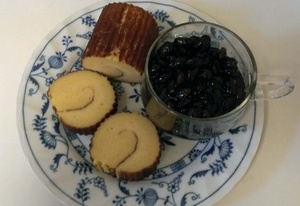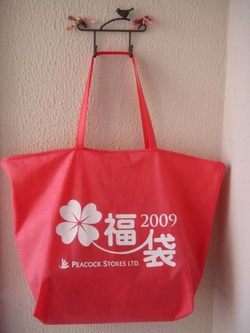As the end of the year approaches, the East Asian quarter of São Paolo is lively. Signs in the shop windows of Japanese food supply stores say, “Now taking reservations for mochi and offerings.”
Even for Nikkei who do not usually follow Japanese customs, one cannot do without mochi during New Year’s. I think it is common to grill the mochi and have it with soy sauce and sugar. Another way is ozoni.
My first New Year’s spent in Japan was 42 years ago. Two Nikkei Brazilians studying abroad came over to my house, and we spent as long as four days together. I remember stocking up on food because we had heard most shops close during New Year’s.
However, the food we made was not osechi cooking, but, rather, Japanese foods prepared Brazilian style. The three of us did not have any relatives or close Japanese friends in Japan, so we could not have an authentic New Year’s.
On New Year’s Eve, I think we watched the Kohaku Utagassen1 on NHK, but both my friends and I were totally into Western music and Brazilian bossa nova at the time, so I don’t feel like we knew Japanese pop songs too well. When the program ended, we went outside and saw that there were great numbers of people heading toward the shrines, so we went along, as well. We put our hands together and prayed, just like everyone. Being Catholic, we offered our prayers to the Lord Jesus Christ.
Time passed, and my second New Year’s in Japan was seven years ago. I was staying at the home of Hiroshi and Naomi, my longtime Japanese friends in Tokyo, and was taken care of by them, their relatives, friends, and acquaintances. I was able to experience many wonderful things.
This time, my New Year’s in Japan was perfect! I encountered foods I had never known before and thought, especially for New Year’s, you cannot beat what comes from the original place.
Kuromame (black beans), which I had never seen in Brazil, became one of my favorites. Those soft, shiny beans; that faint, sweet smell; that delicious taste that leaves you speechless! It was so delicious I forgot to take a picture of it. When I told my friend Naomi about this, she went so far as to make kuromame again and sent me pictures of it. The datemaki on the side is also hand-made by my friend and is another one of my favorites.
The Christmas decorations and illuminations that color the streets of Japan are also the best! You can see these in Brazil, as well, but, as things are so unstable here now, it is dangerous to go outside at night, and I always do my best to avoid it. I put up as my wallpaper the illuminations I saw at Odaiba in 2009 and even now gaze at it, remembering how good it was.
Another great experience I had was when my friend asked me to go buy a “fukubukuro”.2 In that moment, I remembered the television show “Hajimete no Otsukai”3 and thought it sounded interesting. I left in high spirits. When I returned, my friend told me to open it. I was as full of anticipation as a child opening a Christmas present, heart aflutter! Inside, there were so many delicious-looking things I did not know which to eat first.
To this day, I still keep as a prized possession the red bag used for the “fukubukuro”. Inside are my shopping bags. Whenever I look at this bag, I always remember my New Year’s in Japan. I keep as my motivation for each day the hope that I might once more be able to go.
Everybody, Happy New Year’s!
Notes:
1. Kōhaku Utagassen is an annual music show on New Year’s Eve produced by Japanese public broadcaster NHK.
2. A bag that is filled with various things and sealed, often sold at the beginning of the New Year.
3. A popular program on Japanese television that shows children, ages three to six, going on errands for the first time.
© 2015 Laura Honda-Hasegawa





